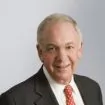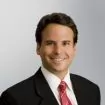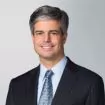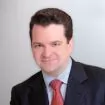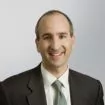"Wild Thing" Forced to Tap Out in Battle against ESPN
Last month, the Eighth Circuit Court of Appeals forced former professional wrestler Steve "Wild Thing" Ray to tap out in his battle against ESPN by dismissing the wrestler's right of publicity suit for failure to state a claim. Mr. Ray originally sued ESPN for rebroadcasting old wrestling matches in which Ray participated without his permission, claiming that such unauthorized rebroadcasting infringed his state-law right of publicity. In a federal court forearm smash, the district court for the Western District of Missouri held that the Copyright Act preempted Ray's right of publicity claim. Subsequently, Ray appealed the ruling – hoping for a surprising "sunset flip" of his dismissal – but the Eighth Circuit affirmed the lower court's submission hold.
Under the laws of most states, the right of publicity, or a similar tort such as misappropriation, prevents the unauthorized commercial use of one's identity, likeness, name or personality. However, according to 17 U.S.C. § 301(a), the Copyright Act will preempt state-law claims when (1) the work at issue comes within the subject matter of copyright and (2) the state law created right is equivalent to a right within the scope of copyright.
As the Eighth Circuit pointed out in its decision, broadcasts of sporting events, like those of Ray's past performances, are "original works of authorship...fixed in a tangible medium of expression" and can be "perceived, reproduced, or otherwise communicated," and are therefore properly the subject matter of copyright. (Ray v. ESPN, Inc., 2015 WL 1810486 (8th Cir. Apr. 22, 2015)).
As to the second preemption prong, copyright owners hold the exclusive right to reproduce and license copyrighted work, including broadcasts. Here, according to the court, Ray's likeness could not be detached from the copyrighted performances. Any infringement of his state-law right therefore derived from the mere rebroadcast of the performance, the exact right that the Copyright Act confers upon the copyright owner. Thus, with a resounding superplex from the second rope, the Eighth Circuit rejected Ray's arguments and ruled the state law created right is equivalent to a right within the scope of copyright. In so ruling, the court distinguished the cases cited by Ray, which generally involved using an individual's likeness in advertisements without permission to promote commercial products, as opposed to the current dispute which involved rebroadcasting a copyrighted film.
The Eighth Circuit's decision comes on the heels of another right of publicity suit targeting ESPN, wherein the father of former professional wrestler Eddie Gilbert is suing WWE and ESPN for rebroadcasting his son's past performances. However, the district court of the Western District of Tennessee, overseeing the Gilbert case, is not bound by the Eighth Circuit's decision.
As these cases unfold it will be interesting to see what effect, if any, signed releases of the athlete's right of publicity have on the courts' decisions and their copyright preemption analyses. The Eighth Circuit noted that Mr. Ray specifically agreed with the Universal Wrestling Foundation that his performances would be recorded and sold. Mr. Gilbert, however, claims that his son never signed with WWE or ESPN and therefore never transferred his right of publicity in his performances.
The validity of any given waiver is one thing. But whether a waiver is even required to broadcast sporting events where the defendant in question holds or has licensed the copyright is the crucial question. These heel vs. face matches, pitting broadcasters against athletes, are cropping up around the country and while the Eighth Circuit needn't confront the question, the Gilbert court might. Whether the courts decide to somehow pin their decisions on the legitimacy or presence of an underlying waiver, or instead lay the preemption smackdown on all such right of publicity claims, remains to be seen.
Cable Networks Throw Copyright Infringement Haymaker at Online Streaming Sites
The May 2nd bout between Floyd "Money" Mayweather and Manny "Pac-Man" Pacquiao (the "Fight") was billed as the most anticipated boxing match in recent history. The run-up to the Fight involved years of intense back-and-forth between the two camps (the numerous negotiation attempts were its own version of a 12-round slugfest) before the two fighters finally agreed to terms. From a fan's perspective, the May 2nd fight promised to settle the debate over this era's best pound-for-pound boxer – but the match drew global interest for much more than that.
Economically, the Fight shattered the previous record for the largest purse in boxing history (the $152 million purse earned by Mayweather's 2013 bout with Canelo Alvarez),and netted more than $400 million in pay-per-view buys alone and about $500 million in total revenue. Pay-per-view ("PPV") buys represent a considerable chunk of total value, and the Fight commanded around $89.95 per PPV buy (and much more for commercial subscribers), with a reported 4.4 million PPV buys. These figures would cause any boxing promoter to leap onto the ring ropes and pound their chest in triumph. Not surprisingly, the Fight also drew anonymous online sites seeking a piece of the action by promising to show free live streams of the bout.
In a complaint filed on April 28, 2015 in the United States District Court in the Central District of California, Showtime Networks Inc. ("Showtime") and Home Box Office Inc. ("HBO"), along with Mayweather and Pacquiao's promotion companies, Mayweather Promotions, LLC and Top Rank, Inc. (together, the "Plaintiffs"), claimed a host of online streaming websites (pretenders, not legitimate contenders) planned to broadcast unauthorized live Internet streams of the Fight's coverage in violation of federal copyright laws (Showtime Networks, Inc. v. Doe 1, No. 15-03147 (C.D. Cal. filed Apr. 30, 2015)).
According to the complaint, the Fight was to be a jointly produced event with exclusive rights held by HBO and Showtime; the agreement between HBO and Showtime specifically prohibited online streams to United States audiences. At the time the complaint was filed, several online distributors allegedly promised a "free online stream" of the Fight to interested parties, often with embedded graphics of the fighters and countdown timers to the event.
The Plaintiffs argued that unauthorized streams of the Fight would cause irreparable harm by unlawfully infringing on the exclusive rights of reproduction and public performance under the Copyright Act. Additionally, any unauthorized broadcast would throw Plaintiffs against the ropes by threatening to irreparably harm Plaintiffs' relationships with consumers, PPV providers, and authorized carriers, who relied on consumer purchases of the Fight.
The right of first transmission and publication of a popular live sporting event is highly valuable, giving Plaintiffs extra incentive to attempt to seek expedited relief. A week before the Fight, Plaintiffs sent an advance notice of potential infringement to the identified streaming websites (i) demanding the removal of all references to streaming the Fight, and (ii) requiring written assurance that the Fight would not be streamed. Plaintiffs' demand provided a 48-hour window to comply, to which they received no responses. Consequently, Plaintiffs sought a temporary restraining order and other injunctive relief to prohibit distribution of the Fight.
On April 30, 2015, the court granted a temporary restraining order, spurring two of the Defendant websites to remove online offers of free streaming from their home pages. The judge was convinced that Plaintiffs had established that they would suffer irreparable harm in the absence of immediate relief – delivering a knockout blow to the several streaming sites listed in the complaint. The judge was particularly concerned with the effect such streams would have on the Plaintiffs' relationships with third-party providers and consumers, as well as the resulting economic harm.
Boxing promoters and television providers scored a decisive victory, as Internet pirates could not survive the referee's 10-count in this district court title bout.
Balk! Ninth Circuit Deems Decade-old Barry Bonds Conviction Foul
Recently, the Ninth Circuit, sitting en banc, vacated the obstruction of justice conviction of former San Francisco Giant All-Star outfielder Barry Bonds. The conviction rested on a rambling, evasive answer given before a grand jury proceeding during which Bonds had been questioned for hours about his suspected use of steroids. However, after 12 years, the former slugger presumably is relieved to finally have this matter behind him – much like finding out that the manager has graciously given you the afternoon off against the reigning Cy Young Award winner or a wily knuckleballer.
This saga has been drawn out like a long, extra-inning battle, but can be summarized to fit in a SportsCenter highlight. Over a decade ago, Bonds was charged with perjury – a felony – for providing evasive answers to a federal grand jury. The testimony in question was in connection with the infamous Bay Area Laboratory Co-operative (BALCO) steroids controversy, one of the major events that triggered a crackdown and end of what is commonly known as baseball's "Steroids Era." As part of the judicial process, Bonds appeared in front of a grand jury in December 2003. There, he admitted to using a clear substance and cream that he received from his trainer at the time – reasoning that the trainer told him they were legal substances – but denied ever using steroids. Apparently, though, his responses just missed the outside corner when it came to pleasing the jury, which eventually came out of the bullpen to deliver a conviction for obstruction of justice, not perjury. The guilty verdict earned Bonds 30 days of house arrest, two years of probation and 250 hours of community service, but the sentence was stayed while Bonds appealed his conviction. Due to a three-judge Ninth Circuit panel initially upholding the conviction, however, Bonds eventually was required to serve this sentence prior to the most recent development.
Having already served the sentence, Bonds broke out of his years-long legal slump by finally having his conviction overturned by a 10-1 en banc vote. When reviewing the obstruction of justice conviction, the court determined that insufficient evidence existed to convict Bonds. Because a reversal for insufficient evidence implicates Bonds's rights under the Double Jeopardy Clause, he may not be tried again. Although the decision was near-unanimous, there were three concurring opinions, each with different rationales. The first noted that Bonds's statement was nonresponsive and that in no respect could it constitute a criminal act. The second opinion reasoned that a statement such as Bonds's merely triggers the prosecutor's duty to pin the witness down and elicit a clear response. The final concurrence indicated that the examination must be considered as a whole, and when doing so, it cannot be said that Bonds obstructed the process. (United States v. Bonds, No. 11-10669 (9th Cir. Apr. 22, 2015)).
No matter how the court got to home plate, the end result is that, like many of Bonds's home runs in San Francisco, this case is now going, going, gone, deep into McCovey Cove!
The content of this article is intended to provide a general guide to the subject matter. Specialist advice should be sought about your specific circumstances.




